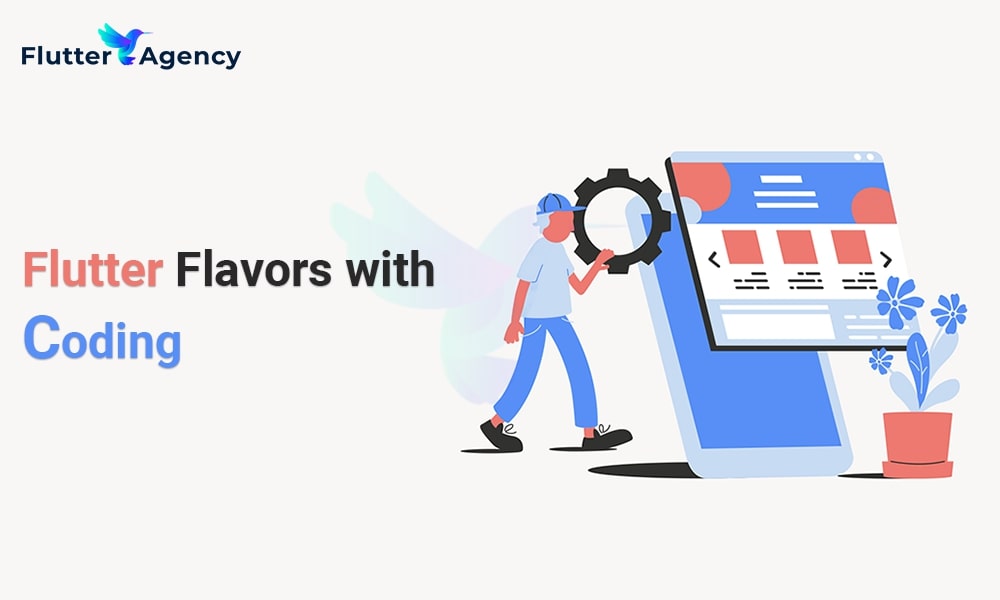Exploring Flavors in Flutter: A Complete Guide with Coding Examples
Flutter, Google’s open-source UI software development kit, has become extremely popular for its ability to create beautiful and productive cross-platform applications. The idea of “flavors” is one of the primary features provided by Flutter. You may develop and release different versions of your app using flavors, each with unique configurations, branding, and functionalities. In this blog article, we will delve deeply into the world of flavors in Flutter, explaining what they are, why they are helpful, and how to use them with practical coding examples.
Learning About Flavors
With the help of varieties, also known as “build flavors” or “product flavors,” you can create numerous variations of your app that are tailored to certain goals or target environments. You might require distinct variants, each with its configurations and assets, for development, testing, and production, as an example.
Why Do We Use Flavor?
1. Environment-Specific Configurations: Different environments, such as development, staging, and production, frequently call for specific configurations, such as API endpoints, server URLs, and authentication keys. You can easily swap between these configurations using flavors.
2. Branding: If your software has to be branded differently for different clients or purposes, flavors give you a method for customizing things like logos, colors, and fonts.
3. Feature Flagging: Flavors can be used to allow or disable particular functionalities depending on the intended environment. This enables the testing of new features without having an impact on the main Flutter development app.
4. Testing and debugging: Flavors make it possible for Flutter app development team to reproduce problems in particular settings, which helps in pinpointing errors and problems.
By defining different flavors for your app, you can customize its behavior and appearance for different audiences, contexts, and devices. This can help you streamline your development process, improve the quality of your app, and provide a more personalized experience for your users.
Properties Of Flavors in Flutter
Here are some of the key properties of flavors in Flutter:
1. Build-time configurations:
They can be used to control the build process, such as the code that is compiled, the resources that are bundled, and the settings that are used.
2. Compile-time constants:
It is used to control the behavior of your code at compile time. For example, you can use flavors to include or exclude code conditionally or to set different values for variables.
3. Runtime environment variables:
Used to control the behavior of your app at runtime. For example, you can use flavors to set different API endpoints or to configure different features.
Implementing Flavors
Let’s analyze, with the help of coding samples, how to add flavors in Flutter.
Step 1: Set up your project.
Make use of your favorite development environment, start a new Flutter project or open an existing one.
Step 2: Create flavor configurations.
Make a flavors directory in the root directory of your project. Make a file for each flavor inside this directory, such as dev.dart, staging.dart, and prod.dart. These files will specify each flavor’s setup.
Example dev.dart :
class FlavorConfig {
static const String apiBaseUrl = 'https://api.dev.example.com';
static const String appName = 'MyApp (Dev)';
static const bool isProduction = false;
}
Example staging.dart :
class FlavorConfig {
static const String apiBaseUrl = 'https://api.staging.example.com';
static const String appName = 'MyApp (Staging)';
static const bool isProduction = false;
}
Example prod.dart :
class FlavorConfig {
static const String apiBaseUrl = 'https://api.example.com';
static const String appName = 'MyApp';
static const bool isProduction = true;
}
Step 3: Set Up Flavor-Specific Resources
Define unique assets for each flavor in your project’s pubspec.yaml file. You may use unique fonts or pictures for each flavor, for instance.
flutter:
assets:
- assets/images/${flavor}/logo.png
Step 4: Define Flavor Entry Points
Create an app.dart file in your lib directory where you can specify the entry point for your application. Depending on the flavor you have chosen, you will import the relevant flavor settings here.
import 'package:flutter/material.dart';
import 'package:myapp/flavors.dart'; // Import the flavor configurations
void main() {
FlavorConfig.setup(Flavor.DEV); // Set the desired flavor
runApp(MyApp());
}
class MyApp extends StatelessWidget {
@override
Widget build(BuildContext context) {
return MaterialApp(
title: FlavorConfig.appName,
// ... Rest of your app configuration
);
}
}
Step 5: Create and Launch Flavors
Now, you may create and operate your app in a variety of flavors. For instance, use the following command to create the app in the developer flavor:
flutter run --flavor dev

Conclusion
With the help of Flutter’s flavors, you can easily develop and maintain many versions of your app with distinctive configurations and branding. You may quickly adjust your app for various contexts and purposes by following the instructions provided in this guide and customizing flavor-specific configurations. By adapting the software to unique requirements, this flexibility not only makes development and testing easier but also improves the user experience.
Due to Flutter’s support for flavors, developers can make flexible, adaptive apps that shine in a range of circumstances. In other words, flavors make sure that your app is appropriately configured for every use case, whether you’re building for development, testing, or deployment.If you’re looking to create a flexible and adaptable Flutter app, consider working with a Flutter app development company in the USA. They can help you design and implement custom flavors to meet the specific needs of your business.
Frequently Asked Questions (FAQs)
1. What do flavors in Flutter mean?
The numerous variations of your Flutter app that can be customized for different locations, audiences, or purposes are referred to as flavors, sometimes known as build flavors or product varieties. You might have several flavors for development, staging, and production, for instance.
2. How can I describe different flavors in my Flutter project?
Specify flavor dimensions and customs in your pubspec.yaml file to define flavors in Flutter. Each flavor can also have its own name and configuration file.
3. Why flavors of Flutter are useful in your project?
Flutter Flavors are useful in your project because they allow you to manage different environments, configurations, and versions of your app seamlessly. With flavors, you can easily switch between development, staging, and production environments, control branding and theming variations, and enable or disable specific features for testing and validation. This streamlined approach enhances codebase management, security, and collaboration, making it an essential tool for robust and flexible app development.
Contemporary ventures
Recent blog
ready to get started?
Fill out the form below and we will be in touch soon!
"*" indicates required fields









